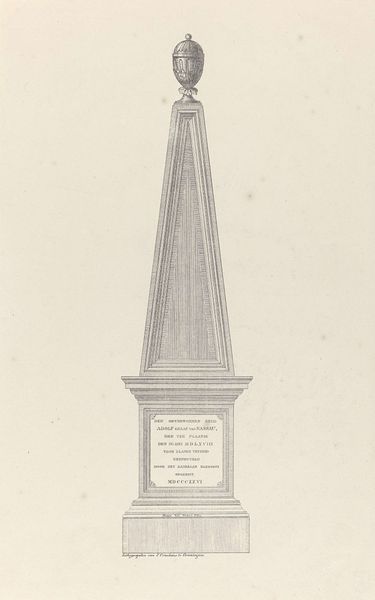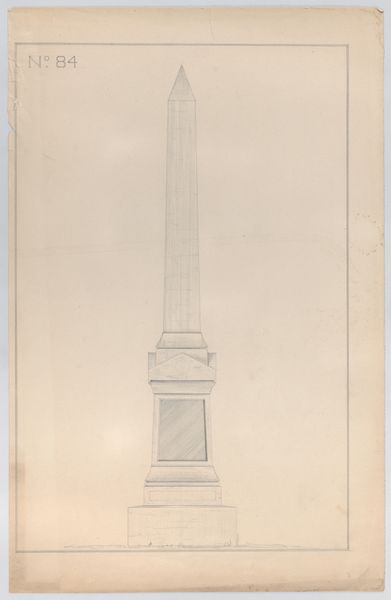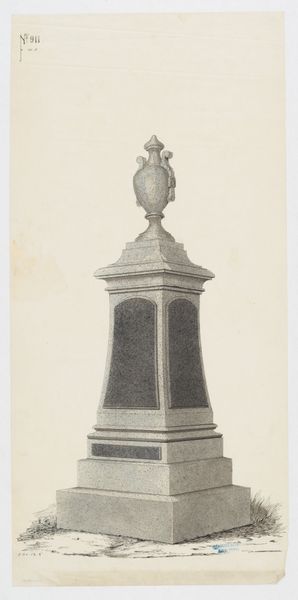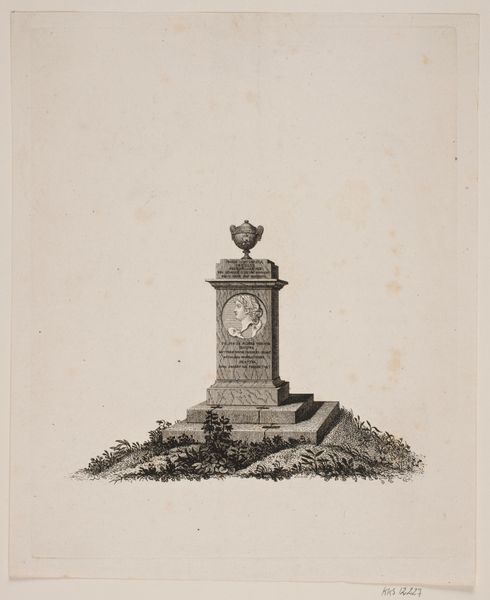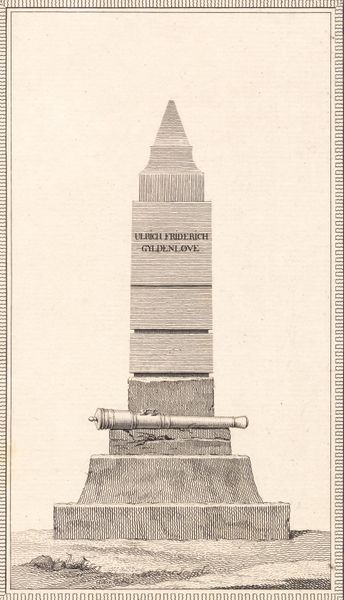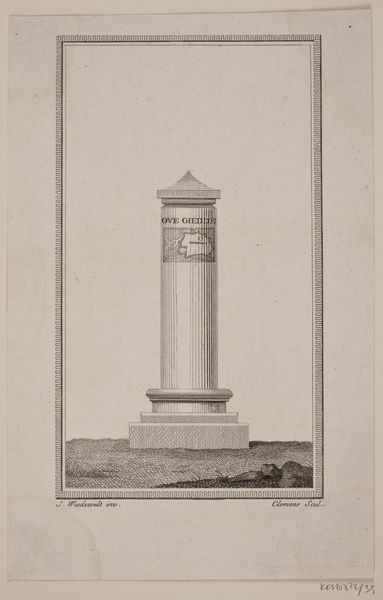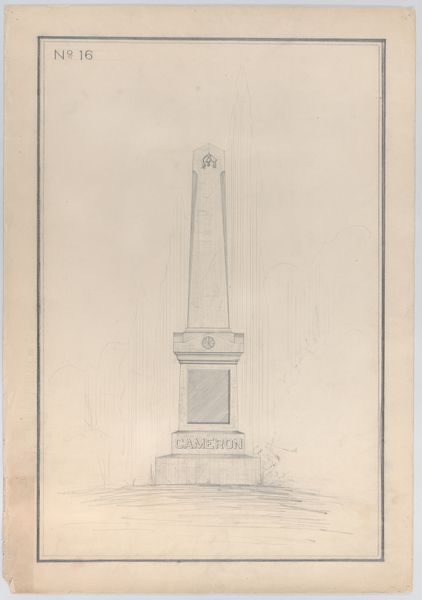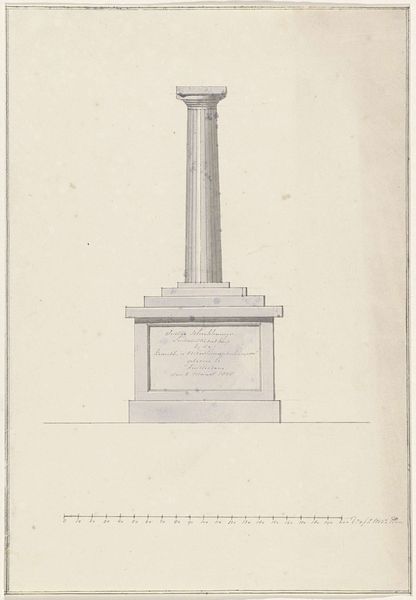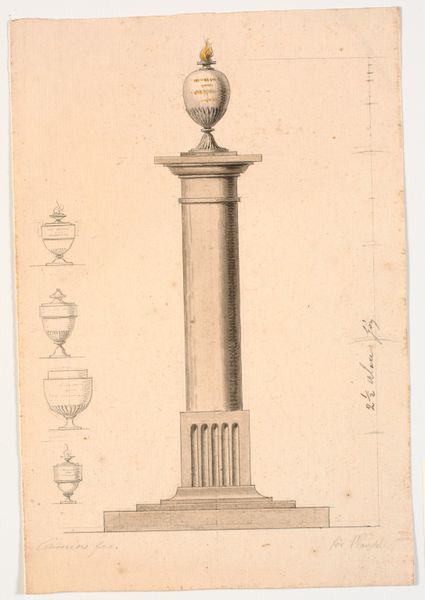
drawing, print, etching
#
drawing
#
neoclacissism
# print
#
etching
#
sculpture
#
landscape
#
history-painting
Dimensions: 178 mm (height) x 103 mm (width) (billedmaal)
Curator: My goodness, that’s…stark. Is it supposed to feel so, well, final? Editor: Indeed. What you're seeing is a print created between 1779 and 1781 by J.F. Clemens. The piece, held here at the SMK, is titled "Arild Huitfeldt," and it utilizes etching to render this rather imposing historical monument. Curator: Etching really captures the weight, doesn’t it? I’m feeling all the history, all the pronouncements from beyond the grave…but is it a grave? It feels so much more…official. A government decree set in stone, maybe? Editor: Precisely. The formal composition, the layered base giving way to a fluted obelisk, topped with an authoritative point, embodies Neoclassical ideals. Think of the Enlightenment—reason, order, permanence. The lines are precise, the structure geometric, almost brutally clear in its intent to convey authority. Curator: "Brutally clear" - I like that! There's a landscape, but it's the barest suggestion, just a ground for this... pillar of something-or-other to stand on. Even the frame seems severe. Was everything this serious back then? Or is that the Neoclassical spin – “Let’s make sure everyone knows who’s in charge, and how absolutely right we are?" Editor: The visual vocabulary speaks to an era deeply concerned with establishing enduring legacies. Huitfeldt, in this context, wasn’t merely a person; the monument embodies historical narrative itself—orderly, reasoned, and built to withstand time. Consider the semiotic weight of such forms, their insistent rationality. Curator: You know, for something so rooted in reason, it still sends shivers down my spine. Makes me wonder about all the things we build – what stories will our structures tell? What will the future *feel* when they look back at us? It looks timeless but doesn't offer any sense of what time could do to it. Editor: Perhaps the most interesting question then becomes: What new contexts and meanings are generated as this historical object finds new audiences today, removed from its initial temporal frame? Curator: Oh, so true. It invites reflection not just on the past, but how our understanding shifts in the present moment too. I felt the coldness of it first but appreciate how it provokes consideration of societal values. Editor: Exactly! Thanks for adding that vital touch.
Comments
No comments
Be the first to comment and join the conversation on the ultimate creative platform.
